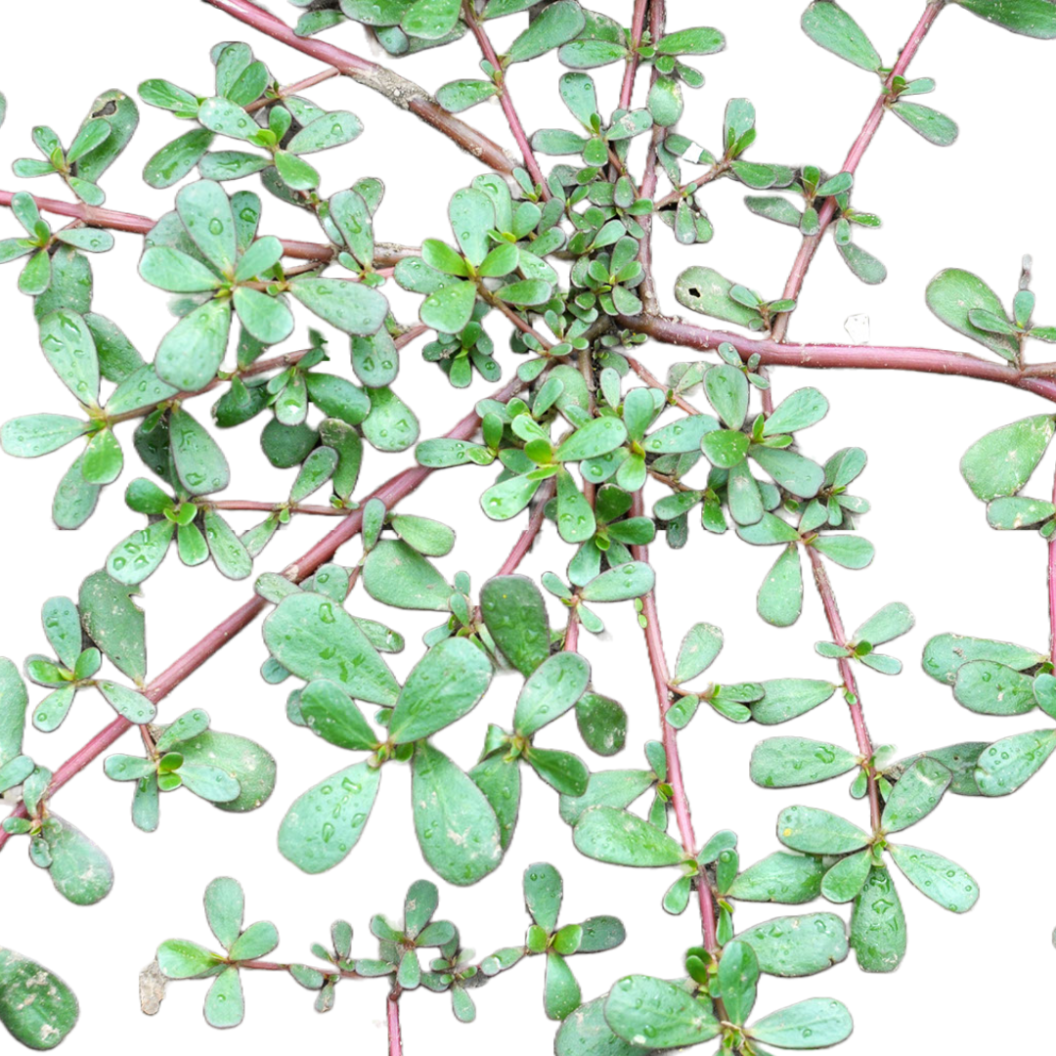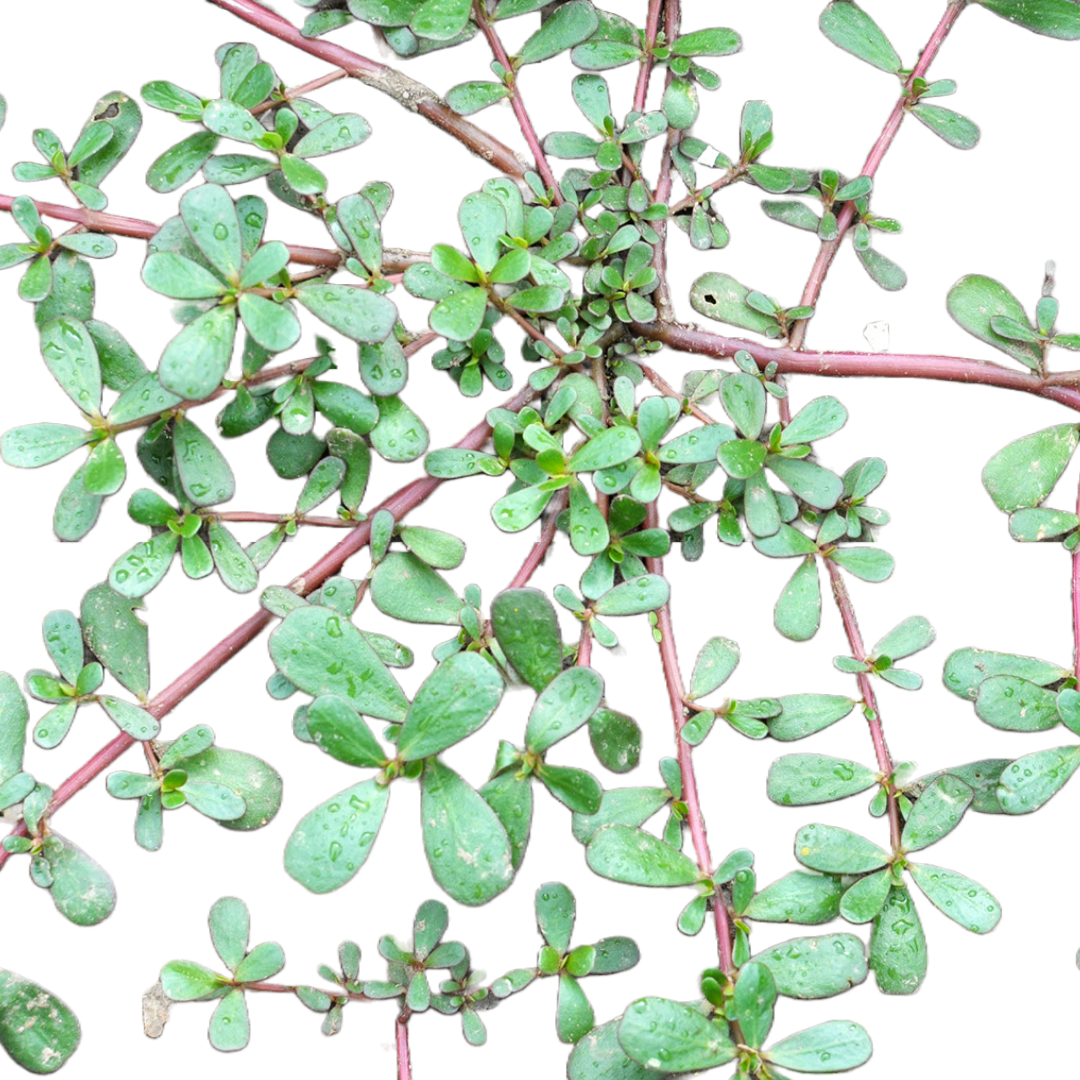
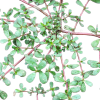
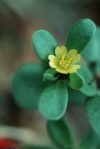

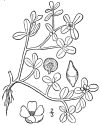
Purslane
DESCRIPTION: Purslane has small, succulent leaves that are green and slightly shiny, and sometimes tinged with a reddish hue. Purslane is often found in gardens, lawns, and other outdoor spaces, and is known for its ability to grow in a variety of conditions, including hot and dry environments. It's ability to withstand various growing conditions combined with its ability to grow quickly and spread easily are why most people consider it to be a weed.
SCIENTIFIC NAME: Portulaca oleracea
OTHER NAMES: Pigweed, Little Hogweed, Verdolaga, Pusley
LEAF TYPE: Broadleaf
FLOWERS: The flowers of purslane are small and come in different colors, such as yellow, pink, and white. They have a bowl-like shape with five petals that are slightly curved upwards. The petals are delicate and almost translucent, and they have a slightly shiny appearance. The flowers are not very big and usually only bloom for a short period of time, but they can be quite pretty and add some color to the plant's overall appearance.
LEAVES: The leaves of purslane are small and slightly thick, almost like a succulent plant. They are oblong or paddle-shaped and have a slightly rounded tip. The leaves can be green or reddish in color and have a slightly shiny appearance. They are arranged alternately along the stem, and some varieties may have tiny hairs on their surface. When crushed, the leaves of purslane may have a slightly sour or tangy smell.
LIFE CYCLE: Annual
HOW TO IDENTIFY: Purslane is a low-growing plant that spreads out along the ground and can form a thick mat. It has small, paddle-shaped leaves that are slightly thick and shiny, and can be green or reddish in color. One of the easiest ways to identify purslane is to look for its flowers, which are small and come in bright colors like yellow, pink, or white. Another way to identify purslane is to look for its stems, which are slightly reddish in color and have a smooth texture. If you crush the stems or leaves, you may notice a slightly sour or tangy smell, which is another characteristic of purslane. Overall, purslane is a hardy plant that can grow in a variety of conditions, so it's not uncommon to see it popping up in gardens, lawns, and other outdoor spaces.
MECHANICAL CONTROL RECOMMENDATIONS:
1. Hand pulling - More Info
2. Hoeing - More Info
3. Mulching - More Info
4. Solarization - More Info
5. Repeated Cutting - More Info
6. Regular Maintenance - More Info
7. Avoid Disturbance - More Info
CHEMISTRY RECOMMENDATIONS:
Pre-emergent herbicides:
Prodiamine: Prodiamine is a widely used pre-emergent herbicide that provides long-lasting control against various weeds, including purslane. It creates a barrier in the soil that prevents weed seeds from germinating.
Dithiopyr: Dimension is effective against a wide range of weeds, including purslane. It provides both pre-emergent and early post-emergent control.
Isoxaben: Isoxaben is a pre-emergent herbicide that works by inhibiting cell wall formation in germinating weed seeds. It can be effective against purslane when applied before its seeds germinate.
Oryzalin: Oryzalin is a pre-emergent herbicide that prevents cell division in germinating weed seeds. It can provide control against purslane when used according to label instructions.
Pendimethalin: Pendimethalin is another pre-emergent herbicide that creates a barrier in the soil to prevent weed seed germination. It can be effective against purslane and other annual weeds.
Prodiamine + Sulfentrazone: This is a combination pre-emergent herbicide that provides broad-spectrum control against many weeds, including purslane. It offers both pre-emergent and early post-emergent activity.
Post-emergent herbicides:
Glyphosate: Glyphosate is a non-selective herbicide that can effectively control a wide range of weeds, including purslane. It's best used on actively growing weeds and should be applied carefully to avoid harming desirable plants.
Dicamba: Dicamba is a selective herbicide that targets broadleaf weeds like purslane. It's important to use dicamba products labeled for use on the specific type of vegetation you're targeting to avoid damaging non-target plants.
2,4-D: 2,4-D is a common broadleaf herbicide that can effectively control purslane. It's important to use it as directed on the label, as it can harm certain types of broadleaf plants.
Carfentrazone-ethyl: This is a contact herbicide that works quickly to desiccate and kill broadleaf weeds, including purslane. It's often used in turfgrass areas.
Sulfentrazone: Sulfentrazone is a selective herbicide that can provide control of purslane in turfgrass and ornamental settings. It has both pre- and post-emergent activity.
Fluroxypyr: Fluroxypyr is a selective herbicide that targets broadleaf weeds. It can be effective against purslane in certain situations.
Clopyralid: Clopyralid is a selective herbicide that primarily targets broadleaf weeds. It can be used to control purslane in various settings.
Selective herbicides:
2,4-D: 2,4-D is a widely used selective herbicide that targets broadleaf weeds, including purslane. It's effective in lawns, turfgrass, and other settings.
Dicamba: Dicamba is another selective herbicide effective against broadleaf weeds like purslane. There are formulations designed for various applications, including lawn care.
Triclopyr: Triclopyr targets broadleaf weeds and woody plants. It's effective against purslane and can be used in areas where you want to protect grasses.
Clopyralid: Clopyralid is a selective herbicide that primarily targets broadleaf weeds, making it effective against purslane. It's often used in turf and non-crop areas.
MCPA: MCPA is a selective herbicide that targets many broadleaf weeds, including purslane. It's often used in agricultural and turf settings.
Fluroxypyr: Fluroxypyr targets broadleaf weeds and can be used to control purslane in certain situations.
Sulfentrazone: Sulfentrazone is a selective herbicide with both pre- and post-emergent activity against broadleaf weeds, including purslane.
Non-Selective herbicides:
Glyphosate: Glyphosate is one of the most widely used non-selective herbicides. It's effective in killing a broad range of weeds, including purslane. Glyphosate is often used for spot treatments, and care should be taken to avoid spraying desirable plants.
Glufosinate: Glufosinate is another non-selective herbicide that targets a variety of weeds, including purslane. Like glyphosate, it should be used with caution around desirable plants.
Diquat: Diquat is a non-selective herbicide that acts quickly to desiccate plant tissues. It's often used in aquatic and non-crop areas.
Paraquat: Paraquat is a fast-acting non-selective herbicide that kills plants upon contact. It's used for spot treatments and can be toxic, so strict safety precautions are necessary.
Imazapyr: Imazapyr is a non-selective herbicide often used for vegetation management in non-crop areas. It can have residual effects, so careful application is important.
Flame Weeding: While not a chemical herbicide, flame weeding involves using a propane torch to burn the foliage of weeds, including purslane. This method is effective for spot treatments and should be used with care to avoid starting fires or damaging non-target plants.
Recommended Prevention
Recommended Control

